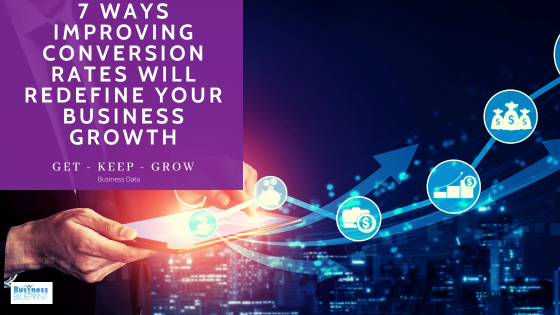Today, a business’s online presence is a platform and a pivotal battleground for customer engagement and conversion. The difference between a thriving enterprise and a struggling operation often boils down to conversion rates—the magical pivot where interest transforms into tangible action.
This article delves into the transformative power of enhancing your conversion rate, a strategic move that propels every facet of your business forward.
By elevating this critical metric, you’re not merely adjusting numbers but setting the stage for exponential growth and solidifying your brand’s market position.
Sign Up: Stay ahead of the curve with our expert insights. Sign up now and transform your business strategies for unparalleled growth.

#1 Increased Revenue
One of the most tangible benefits of improving your conversion rate is the direct impact on your bottom line. Consider this: without increasing your site’s traffic, optimising your conversion process can lead to a significant uptick in sales.
It’s about making every visitor count, precisely turning their interest into action. This involves meticulously examining your sales funnel, identifying and removing friction points, and enhancing the clarity and appeal of your value proposition.
Real-world success stories abound, where businesses have doubled their revenue by incrementally improving their conversion rates.
Actions
- Implement upselling and cross-selling strategies on your checkout pages to increase the average order value.
- Optimise your call-to-action (CTA) buttons in placement, size, colour, and messaging to make them more compelling.
- Use scarcity techniques like limited-time offers or low-stock alerts to create a sense of urgency and encourage immediate action.
#2 Higher Return on Investment (ROI)
Every marketing dollar holds more value when your conversion rate climbs. It means your existing traffic—garnered through SEO, content marketing, social media, and paid ads—converts more effectively, giving you more bang for your buck.
This efficiency not only conserves resources but also amplifies the impact of your marketing strategies. An optimised conversion rate ensures that your efforts produce tangible results, making every aspect of your marketing mix more potent and purposeful.
Actions
- Allocate a portion of your budget to A/B testing different marketing channels and strategies to identify the most cost-effective approaches.
- Focus on retargeting campaigns to re-engage visitors who have shown interest but haven’t converted yet, as they are more likely to convert than first-time visitors.
- Utilise customer segmentation to deliver more personalised and relevant marketing messages, increasing the likelihood of conversion.
#3 Improved Customer Insights
The journey to an optimised conversion rate is paved with deep customer insights. It’s about going beyond surface-level analytics to understand your audience’s motivations, preferences, and behaviours.
This process often involves sophisticated data analysis, A/B testing, and user feedback mechanisms to hone in on what truly resonates with your potential customers. With this knowledge, you can craft more personalised, compelling marketing messages and offers, significantly boosting your conversion rates.
Actions
- Leverage analytics tools to track user behaviour on your website, such as heat maps and session recordings, to gain deeper insights into their interactions.
- Conduct A/B testing on your landing pages, product descriptions, and CTAs to understand what resonates most with your audience.
- Create customer personas based on your data to tailor your marketing efforts more effectively to different segments of your audience.
#4 Greater Competitive Advantage
A superior conversion rate in the crowded digital marketplace indicates your brand’s efficiency and appeal. It’s evidence that your business is more adept at capturing and converting interest into sales, a crucial differentiator in any industry.
This advantage extends beyond mere numbers; it’s about positioning your brand as the preferred choice for consumers, thereby capturing a larger market share and setting new standards in customer engagement and satisfaction.
Actions
- Keep a close eye on your competitors’ strategies and performance, and learn from their successes and mistakes.
- Innovate continuously by experimenting with new technologies, platforms, and marketing tactics to stay ahead.
- Focus on building a solid brand identity that differentiates you from your competitors and resonates with your target audience.

#5 Enhanced Customer Experience
The quest for a higher conversion rate invariably leads to a more streamlined and enjoyable customer experience. From the ease of navigation on your website to the clarity of your product descriptions and the simplicity of the checkout process, every element is refined to remove barriers and enhance satisfaction.
This focus on the customer journey boosts conversion rates and builds brand loyalty and advocacy, as delighted customers are more likely to return and recommend your business to others.
Actions
- Ensure your website is fast, mobile-friendly, and easy to navigate to minimise user friction and frustration.
- Offer live chat support to assist visitors in real-time, promptly addressing their queries and concerns to prevent drop-offs.
- Personalise the user experience as much as possible, using data to tailor product recommendations, content, and offers to individual preferences.
#6 Increased Customer Lifetime Value
A strategic focus on conversion rate optimisation tends to attract more engaged and committed customers, thereby increasing each customer’s average lifetime value (LTV). These individuals resonate deeply with your brand’s value proposition and are likelier to engage in repeat business and higher-value transactions.
By nurturing these high-quality leads through optimised conversion strategies, you build a foundation of loyal customers who contribute significantly to your revenue over time.
Actions
- Implement a loyalty program that rewards repeat purchases and encourages long-term engagement with your brand.
- Stay in touch with your customers through regular, value-added communication, such as newsletters, personalised offers, and updates on new products or features.
- Solicit and act on customer feedback to continuously improve your products and services, showing your customers that their opinions matter and fostering loyalty.
#7 Scalability
A business with a solid conversion rate is well-positioned for scalable growth. This robust foundation indicates that your core processes—from marketing to sales—are efficient and effective, providing a reliable pathway for expanding your operations.
Maintaining and improving your conversion rate is crucial as you scale, ensuring that growth translates into increased profitability and market share rather than merely escalating costs.
Actions
- Automate repetitive tasks and processes to increase efficiency and free up resources for growth-focused activities.
- Develop scalable marketing strategies, such as content marketing or social media engagement, that can be expanded or adapted as your business grows.
- Invest in scalable technologies and platforms supporting increased traffic and transactions without compromising performance or user experience.

Conclusion
Elevating your conversion rate transcends mere numerical improvements; it’s about fundamentally transforming your business’s trajectory. The benefits span from increased revenue and ROI to deeper customer insights and enhanced scalability. By prioritizing conversion rate optimisation, you’re not just tweaking a metric but setting your brand on a path to sustainable growth and market leadership.
FAQs
Q1: What defines a ‘conversion’ for my business?
A1: A conversion can vary depending on your business objectives, ranging from a sale to a newsletter sign-up or a booked consultation. Clarifying your primary goal is the first step in optimisation.
Q2: Are there industry-specific benchmarks for conversion rates?
A2: Yes, conversion rate benchmarks can vary widely across industries. Researching your specific sector is crucial to setting realistic and ambitious targets for your business.
Q3: How do A/B testing and user feedback affect conversion rate optimisation?
A3: A/B testing allows you to compare different versions of your web pages to determine which performs better, while user feedback provides direct insights into customer preferences and pain points.
Q4: How significant is mobile optimisation in improving conversion rates?
A4: With the increasing prevalence of mobile browsing, ensuring your website and conversion paths are mobile-friendly is crucial for capturing this growing market segment.
Q5: Can conversion rate optimisation impact SEO?
A5: While the primary goal of CRO is to increase conversions, a well-optimized, user-friendly site can positively influence your SEO rankings by improving user engagement metrics.
Additional Reading
Beyond KPIs: Understanding and Measuring Critical Drivers in Business
Boost Your Small Business: Mastering A/B Testing on Low-Traffic Sites
Transform Your Sales Strategy: 5 Must-Have Sales Funnels for Small Business




